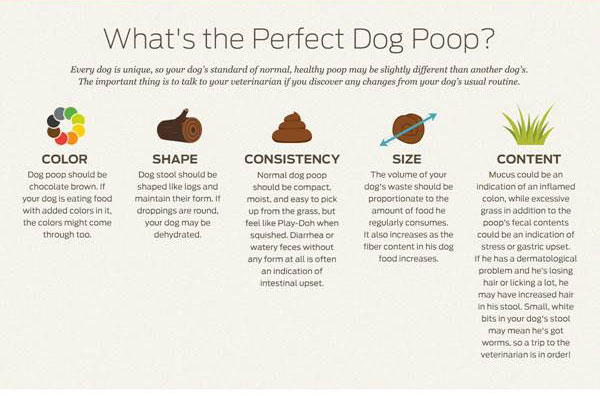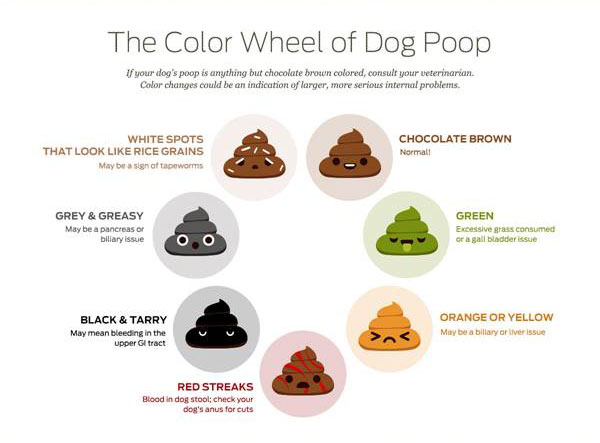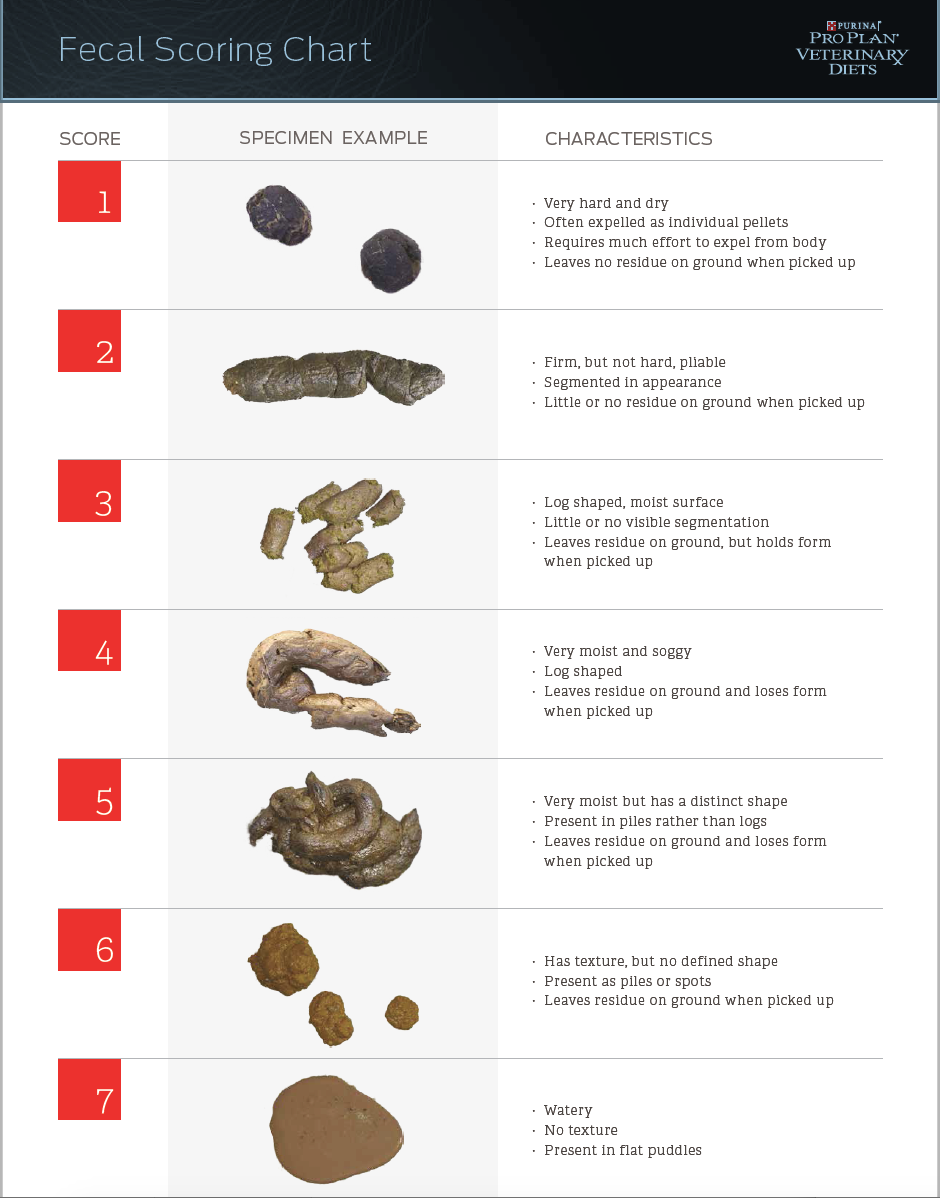My Dog Has Diarrhea What Should I Feed Her
AKC is a participant in affiliate advertising programs designed to provide a means for sites to earn advertising fees by advertising and linking to akc.org. If you purchase a product through this article, we may receive a portion of the sale.
It's not a topic anyone likes to discuss, but if you own a dog, chances are you have found yourself cleaning up a stinky brown puddle (or, not-quite-politely put, doggie "runs") more than you'd care to think about.
Diarrhea is a common canine affliction and it varies in frequency, duration, and intensity from dog to dog.
You may not be able to totally prevent diarrhea, but knowing as much as possible about it might help limit the number times your dog has one of these unpleasant episodes and reduce the duration when the runs do come. Luckily, there are even a number of over-the-counter diarrhea treatments for dogs.
The Canine Digestive System
There are significant differences between the way dogs and people digest food.
Human jaw shape and salivary enzymes, for example, will start breaking down a morsel in the mouth. Dogs, on the other hand, have mouths and jaws made for tearing, crushing, and wolfing food down. Their salivary enzymes are mostly designed to kill bacteria, which is why they can tolerate items that would send their human companions to the hospital.
Food travels rapidly down the canine esophagus and enters the stomach in chunks, where most digestion takes place. Canine stomach acids are about three times stronger than those of humans, so they can digest food that is pretty much intact. Under normal circumstances, transit time from mouth through the small and large intestines should be under 10 hours, producing a firm, well-formed stool at the end.
Top Causes of Dog Diarrhea
Many things can disrupt this well-balanced system, causing diarrhea or, less frequently, constipation. Some things, like eating too much grass, are not serious at all. Others can be a sign of a life-threatening problem, such as an indigestible object (like a rock) lodged in the stomach, or a disease like cancer.
There are many reasons why a dog may develop loose stools, but most cases may be attributed to one of these 12 triggers:
- Dietary indiscretion: Eating too much, eating garbage, or spoiled food. There's actually a name for it in veterinary circles—"garbage toxicosis" or "garbage gut."
- Change in diet: It may take a few days for a dog's digestive system to adapt to new proteins. That's why many dog-food manufacturers recommend that you go slow when you switch from one brand of food to another.
- Food intolerance
- Allergies
- Parasites: Most of these will cause illness in puppies or in adults with weak immune systems:
- Roundworms
- Hookworms
- Whipworms
- Coccidia
- Giardia
- Poisonous substances or plants
- Swallowing an indigestible foreign body, like a toy or socks
- Infections with common viruses such as:
- Parvovirus
- Distemper
- Coronavirus
- Bacterial infections, such as salmonella
- Illnesses, such as kidney and liver disease, colitis, inflammatory bowel disease, and cancer
- Antibiotics and other medications
- Stress or emotional upset
What Stools Say About Your Dog's Health
The consistency and color of diarrhea reveal a lot about the cause of the problem and what is happening in your dog. Take very careful note of the color, consistency, and anything else that might help when you describe the symptoms to a vet. In many cases, diarrhea will resolve after a few days of home treatment, but it's a good idea to give your vet a call if it continues for a long period or has any one of several signs that may point to a serious problem.
This infographic from Purina gives you an idea of a "perfect dog poop," which is chocolate brown, shaped like logs, compact, and easy to scoop. Experts say it should feel like cookie dough or Play-Doh when pressed. Large volumes, pudding-like or watery consistency, or signs of mucus (looks like jelly), or blood streaks, are not normal.

Take Note of the Color of the Poop
Color can also indicate a lot about what is going on inside your dog's gut. Chocolate brown is normal, while colors like orange, green, or gray may signify issues with such organs as liver, gall bladder, or pancreas. Black tarry stool is very serious, and may point to internal bleeding. If you see this, contact your vet as soon as possible.
Purina has also provided a handy reference—a color wheel of dog poop.

Color, shape, and consistency will all help you and your vet figure out what is wrong when your dog gets diarrhea. These factors will help your vet determine where the problem is originating along the dog's digestive tract.
Other Ways to Decipher Dog Poop
Following are some common abnormalities, in addition to color, and what each might be telling you about why your dog has the runs:
- Frequency:
- Small amounts with straining, several times in an hour, which some people call "the squirts," can be a sign of inflammation of the large bowel.
- Three or four times, with large volume, suggest small bowel disorder.
- Oddly shaped or colored solid objects can tell you what your dog has gotten into. Several small white rice-like shapes, for example, may signify a tapeworm infestation. Grass, wood, or string could tell you that your dog has eaten something that he couldn't digest.
- Consistency: Purina Pro Plan Veterinary Diets developed this well-illustrated chart that shows how vets score canine fecal consistency on a scale of one to seven.

As disgusting as it may seem, it's important that you examine your dog's poop carefully if she has diarrhea so you can give your vet as many details as possible. Armed with this knowledge, the vet will be able to tell you whether to schedule and exam or whether you can treat it at home.
Home Remedies for Dog Diarrhea
A great many cases are mild and, with your vet's advice, maybe treated without a trip to the office. They may respond to a regimen of very basic treatments, including:
Over-the-Counter Dog Diarrhea Treatments
These treatments are good to have on hand and can be ordered online for quick delivery.
Fasting
Withholding food for 12 to 24 hours, and providing water in small amounts frequently, can clear the cause of the upset and allow the gastrointestinal tract to settle. It's usually the first line of attack for diarrhea. Before you decide on a fast, be sure that your dog is healthy enough to endure it. Puppies, and elderly dogs, for example, need nutrients. Also, a fast may not be appropriate for small dogs who do not have the physical reserves of their larger cousins.
Diarrhea can lead to dehydration, so make sure to give your dog access to water at all times. You may also offer unflavored Pedialyte to help maintain electrolyte balance under a vet's advice.
Kitchen Cures for Dog Diarrhea
After a fast, simple foods are usually introduced slowly. Many dog owners start with foods that act as binders, which can help normalize stool consistency. Some tried-and-true methods include:
- Rice water: Boil high-quality rice in a lot of water, remove the grains, and offer the dog the creamy white soup that's left. A splash of broth or a bit baby food will make it more palatable.
- Plain white rice
- Pumpkin (100% pumpkin puree from the grocery store, pumpkin powder, or a pet-specific canned pumpkin for dogs) has the odd distinction of being effective both for diarrhea and for constipation. If you can't get pure pumpkin, a good alternative is pumpkin powder made specifically for pets.
- Plain yogurt with active cultures can help dogs who can tolerate milk and milk products.
- Probiotics to promote live bacteria that aid digestion (these are also found in yogurt)
- Boiled potatoes without skin
- Cottage cheese
- Plain protein sources such as egg (prepared with no butter or oil) or chicken (without skin)
- Herbs, such as fennel, may have gut-soothing properties
- Specially-formulated dog foods: Some manufacturers offer sensitive stomach dog foods that can soothe stomach problems. You may need to obtain some of these from your vet.
- Over-the-counter medications for humans may also be effective for doggie diarrhea, but should be given with caution, and you should always consult with your vet before using them.
Methods that work for one dog may not help another, so you might need to do a little experimentation to find the right formula. It might also be helpful to write down what works and what doesn't so you'll know what to do the next time you find yourself mopping up a mess.
Once you find a recovery diet that agree with your dog, and doesn't cause a relapse, you can slowly increase the portions over a period of days, and then start to add small quantities of your dog's regular food, until things are back to normal.
When Dog Diarrhea Means a Trip to the Vet
The right time to contact a vet depends very much on what's normal for your dog. Unfortunately, some dogs are more prone to digestive disorders than others, so you have to be very aware of the things that are out-of-the-ordinary on an individual basis.
There are, however, benchmarks that can suggest that you should at least consult with your vet:
- Other physical symptoms, such as lethargy, fever, vomiting, dry, tacky or pale gums, or weakness;
- Diarrhea that does not stop despite home remedies that worked in the past;
- Dehydration;
- Long duration (Some say a few days, others give more time. This all depends on what is normal for your dog.);
- Use of medication (a dog on antibiotics, for example);
- Existing conditions, such as advanced age, diabetes, Cushing's, cancer, or any medical issue, and
- When things just don't seem right. You know your dog, and only you know the subtle signs that something is wrong. Respect your instincts and if you think you need veterinary guidance, pick up the phone.
Source: https://www.akc.org/expert-advice/health/doggie-diarrhea/
0 Response to "My Dog Has Diarrhea What Should I Feed Her"
إرسال تعليق